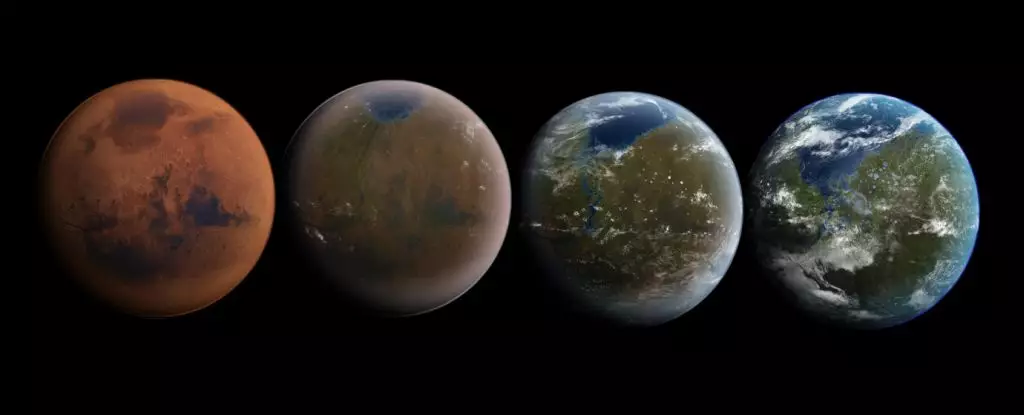Creating a sustainable environment on Mars is not an easy task. One of the major hurdles is the extreme cold temperatures on the planet, with the median sitting at a bone-chilling -64 degrees Celsius. In order to terraform Mars, scientists need to find a way to heat up the planet and maintain a warmer climate conducive to life. Previous strategies proposed for warming Mars involved pumping the planet’s atmosphere with greenhouse gases, similar to Earth’s greenhouse effect. However, Mars lacks the necessary ingredients for this method, making it a costly and difficult endeavor.
A team of researchers led by electrical engineer Samaneh Ansari of Northwestern University has come up with a groundbreaking solution to warm Mars using nanoscopic metal rods. By releasing these tiny rods into the Martian atmosphere, they can create and maintain a greenhouse effect that significantly increases the feasibility of the terraforming project. This method is claimed to be 5,000 times more efficient than previous proposals and could be the key to making Mars more hospitable for photosynthetic organisms.
The nanorod strategy involves modeling tiny metallic rods, similar in size to the dust particles native to Mars, to be released into the sky. These rods, with an aspect ratio of 60:1, would trap sunlight and maintain a greenhouse effect, raising the temperature of Mars and causing surface ice to melt. By sustained release of these nanorods, the warming effect would gradually transform Mars into a more habitable environment for microbial life. While the process would take several decades, it is a crucial first step towards terraforming Mars.
Despite the promising results of the nanorod strategy, there are still some challenges that need to be addressed. One concern is the longevity of the nanorods in Mars’ atmosphere, as the planet lacks a global magnetic field for containment. Additionally, there is a risk of the nanoparticles attracting water particles and falling back to the surface as rain, which could impact the effectiveness of the warming process. Further research and exploration are needed to fully understand and address these potential obstacles.
The development of the nanorod strategy for warming Mars represents a significant advancement in the field of terraforming. While there are still uncertainties and challenges to overcome, this innovative approach brings us one step closer to the long-term goal of establishing a sustainable human presence on Mars. By leveraging the resources available on the planet and thinking outside the box, scientists may finally unlock the secrets to making Mars habitable for future generations.


Leave a Reply